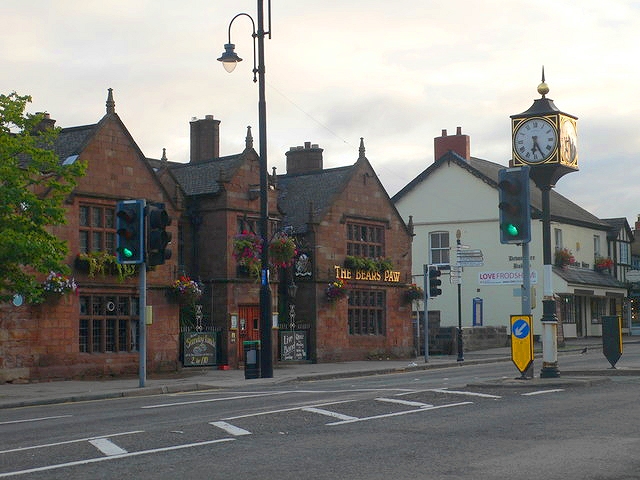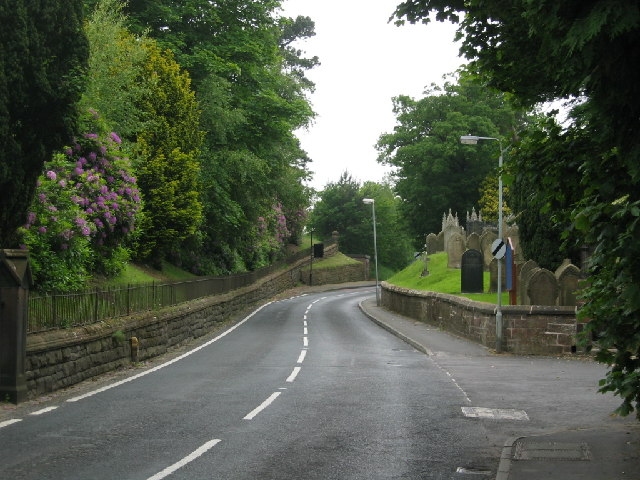
Two loo stops later and we have arrived at Kingsley in Cheshire. After missing our turn (for old times' sake it seems like now) we backtrack and pull into Charnwood Bed and Breakfast. This lovely establishment is set back amongst the trees in a wooded area. We are given a suite with a sitting room overlooking the gardens.
Breakfast was long, long ago, and the car is thirsty for petrol. On the recommendation of our host we head into Frodsham, a market town three miles away. Our timing is a bit off though, as it has been several times on this trip. By the time we've filled the gas tank, it's 4:00PM and we're having a difficult time finding somewhere to have a meal. After walking the streets of this quaint village we are glad to finally find a pub that is still serving.
From the time we step foot inside the pub we can see that this is a special place. It seems that fate has steered us to one more historical site. Built during the reign of Charles I, an original lintel hangs above the main entrance inscribed with the date 1632 A.D. There are many interesting features here, including a Priest Hole hidden at the rear of a cupboard next to the chimney. There are also examples of 17th century construction still in its original condition including oak laths and willow struts. A glass frame protects an exposed section of the interior walls, which are wattle and daub.
We seat ourselves at a table near the Priest Hole and after a quick glance at the menu, all order ham and cheese barms. Our waiter is attentive and very easy on the eyes. We get a little silly, sending him back and forth to the kitchen for condiments, just so we can watch him go. When we finally have everything we need (and then some), he strikes a knowing pose at the bar, as if he's waiting for the photographer from a men's fashion magazine to appear.
Starved as we are, it doesn't take us long to clean our plates. Still, we linger a while absorbing the atmosphere. After paying our bill we wander down the street, and into a bakery. Here Robin amuses the two kind women behind the counter by pointing and asking "what's this" as she moves down the length of the case. She finally decides on one of her beloved meringue concoctions and we head back to our bed and breakfast.
Physically, emotionally and mentally exhausted, our last moments together as a trio are quiet, almost solemn, as if we know that in this trip, the three of us have created something so sublime, that it comes close to being something to be revered.

Cheshire is a county in North West England, bordering Merseyside and Greater Manchester to the north, Derbyshire to the east, Staffordshire and Shropshire to the south and Flintshire, Wales and Wrexham county borough to the west. Cheshire's county town is the City of Chester.
Cheshire's name was originally derived from an early name for Chester, and was first recorded as Legeceasterscir in the Anglo-Saxon Chronicle, meaning "the shire of the city of legions". Although the name first appears in 980, it is thought that the county was created by Edward the Elder around 920.
In the Domesday Book, Chester was recorded as having the name Cestrescir (Chestershire), derived from the name for Chester at the time.
The county covers 905 square miles and has a population of around 1 million. It is mostly rural, with a number of small towns and villages supporting the agricultural and other industries which produce Cheshire cheese, salt, chemicals and silk.
Read more about Cheshire at Wikipedia.